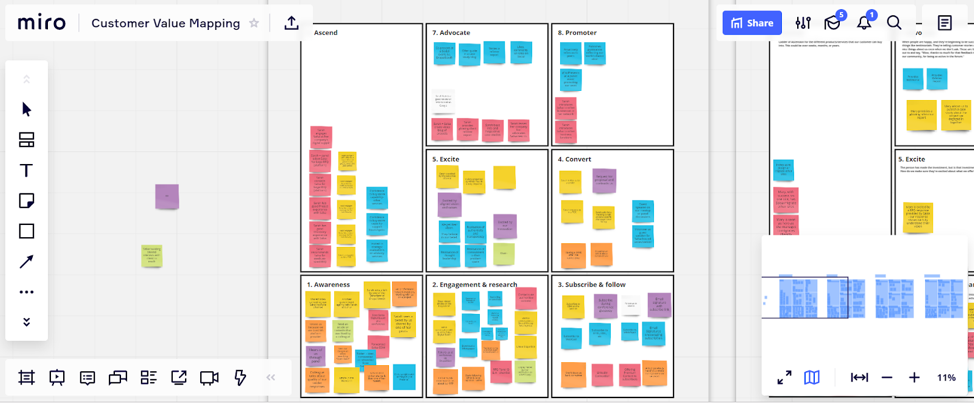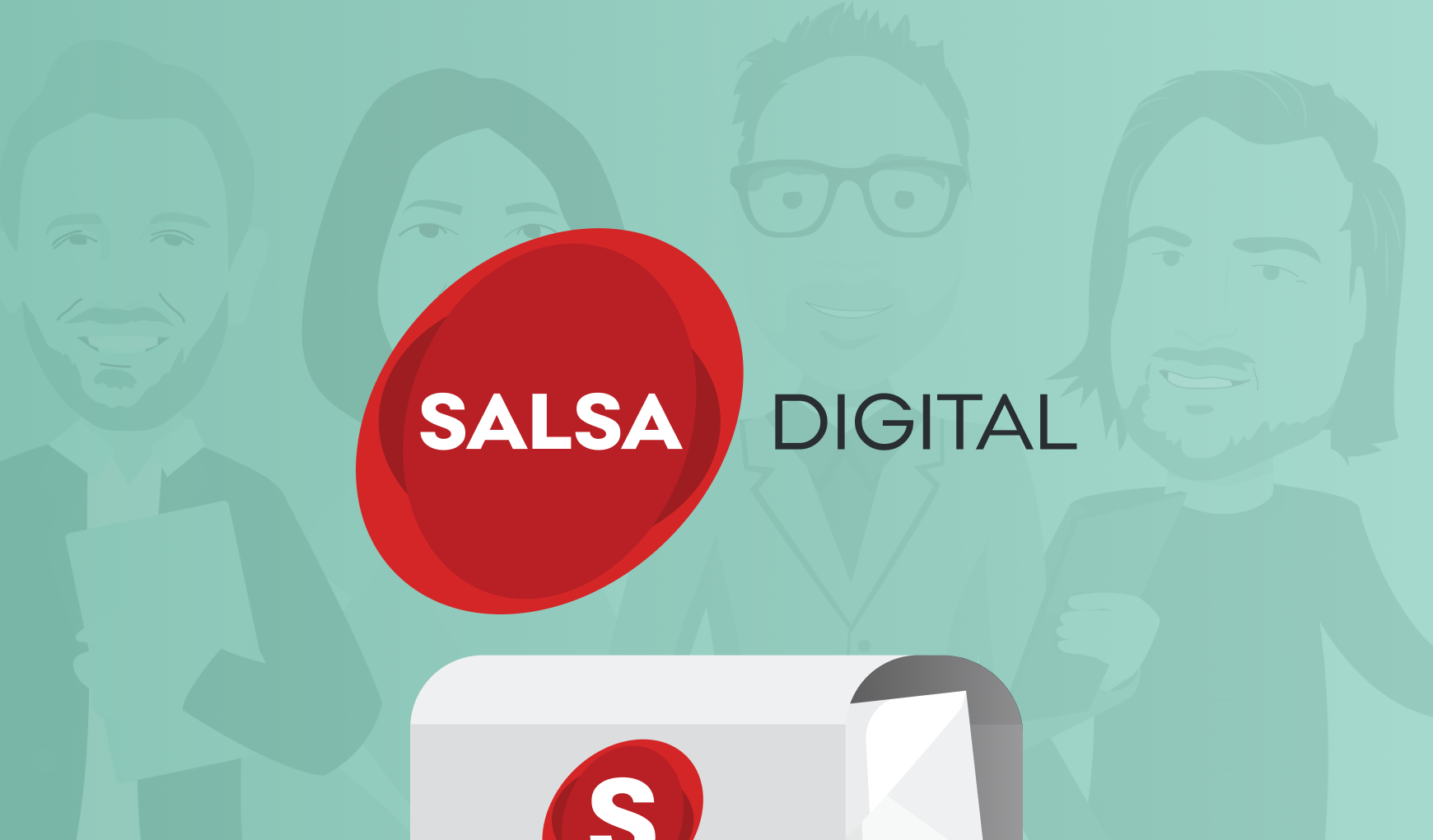
On this page:
User journeys
User journeys provide a visual representation of the stages a person goes through to reach a goal. They also work well with personas, focusing on both their needs and how those needs can be met. For example, our Sarah persona (head of digital) had a goal of driving authentic change for citizens. This need could be met by:
Case studies that show how her vision can be realised and include metrics
Access to authoritative content
Innovative services that will help her deliver change
Inspirational, bold-thinking content (e.g. whitepapers, blogs, vlogs)
You may also like to view this introductory video on customer journey , which takes you through the goals and workshop setup (although it uses a different journey map to the one we used).
The stages
There are many different ways of journey mapping, depending on your end-goal, but we chose to use an eight-stage journey. The stages are:
Awareness — How do visitors who haven't heard of Salsa find out about us? Example: a form of advertising (Facebook), referrals, organic search.
Engagement and research — What do we do to turn this awareness into actual engagement?
Subscribe and follow — How do we get ‘aware’ visitors to become engaged visitors and then to actually subscribe so we have the ability to follow up?
Convert — How do we get them to make a very small investment, either in their time or their money?
Excite — The person has made the investment, but is that investment worth a second date? How do we make sure they’re excited about what we offer?
Ascend — Ladder of ascension for the different products/services that our customer can buy into. This could be over weeks, months, or years.
Advocate — When people are happy, and saying nice things about us without us asking.
Promoter — The promoter is an advocate who is now actively promoting our products and services. They’re someone who’s generating referrals.
Below is a great video that takes you through this eight-stage process.
Our tools
Partly because we were collaborating across several locations (with nearly half the team attending meetings virtually) and partly because it’s a good way to keep a digital record, we used a Miro to map the user journeys. We added ‘sticky notes’ in the board.
Sarah’s user journey
In the screenshot above you can see the Miro board in action. To give you an example of how Sarah might move through the eight stages, consider this journey:
Awareness — Another government agency tells Sarah about us.
Engagement and research — Sarah comes to our website and reads a blog or case study.
Subscribe and follow — Sarah subscribes to our Digital Transformation in Government blog series.
Convert — Sarah invites us to tender.
Excite — Sarah is excited by the solution and vision represented in our tender response.
Ascend — Sarah contracts us, then has a good project experience from discovery to build.
Advocate — Sarah provides us with a glowing referee report.
Promoter — Sarah proactively refers us to her peers.
The above represents one possible journey for Sarah, but as you can see from the screenshot we had many different possibilities within each of the eight stages. We also completed this mapping process for our three other personas: Mary (head of comms), Brett (head of IT) and Dilshan (technical talent). Read our blog about our personas
The challenges
At this stage in the process, we did wonder if our user journey focus should be on the whole customer journey (with multiple touchpoints) or just their interaction with the Salsa website. With a tight timeframe, we decided to narrow the focus a little and concentrate on the most common customer touchpoints (e.g. tenders and referrals) and their website interactions. However, we know that our customers’ journeys could be mapped in a lot more detail and across many different touchpoints and we’ve flagged this as an exercise to complete in the future.
We also needed two full workshops to be able to create user journey maps for all four of our personas — which was challenging in terms of our time.
Next steps
With the user journeys complete, our next step is another workshop, this time on user stories.


